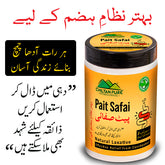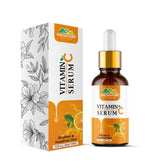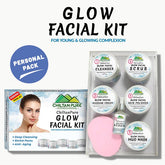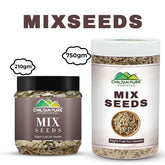Stuff they don’t tell you about glycolic Acid
Just by taking a brief scan of the ingredient labels on your skin care products, you will likely come across one bottle containing glycolic acid. Having been used in the premium skincare community for decades, this acid is by no means a new ingredient, but it is one of the most popular and effective ones available and for good reason! But the full benefits of this powerhouse ingredient aren’t always recognized, so we’re here to set the record straight.
Perhaps the most well-known use of glycolic acid in skin care is as an exfoliator. When it comes to exfoliators and facial scrubs and exfoliating face washes, you have options including both physical and chemical exfoliates. Physical exfoliants use an abrasive substance to, you guessed it, physically remove dirt and dead skin from the surface of your face. Comparatively, chemical exfoliation uses acids or enzymes to help dissolve or lift dead skin off your face.
 Glycolic acid is a type of alpha-hydroxy acid (or AHA) that's derived from sugar cane. It joins other acids you might recognize, such as lactic acid (derived from sour milk and purportedly a favorite of Cleopatra's), tartaric acid (from grapes), and citric acid which, you might guess, comes from citrus fruits.
But it's unique. Of the AHAs, glycolic is the simplest in structure and the smallest; it has the lowest molecular weight. That small molecular weight means it's easy for it to penetrate your skin and be super effective.
Glycolic acid is a type of alpha-hydroxy acid (or AHA) that's derived from sugar cane. It joins other acids you might recognize, such as lactic acid (derived from sour milk and purportedly a favorite of Cleopatra's), tartaric acid (from grapes), and citric acid which, you might guess, comes from citrus fruits.
But it's unique. Of the AHAs, glycolic is the simplest in structure and the smallest; it has the lowest molecular weight. That small molecular weight means it's easy for it to penetrate your skin and be super effective.
 First and foremost, glycolic acid is an exfoliant. It helps shed dead skin cells and reveal the newer, brighter layers underneath by acting on the outermost layer of skin. Normal, outer layer consists of tightly packed layers of dead skin cells that are tightly bonded together. Glycolic acid loosens these bonds. With their glue dissolved by glycolic acid, those tough, rough layers of dead skin cells can more easily slough away.
But because glycolic acid is so small, it can get deeper into your skin too, where it does some serious work. Glycolic acid stimulates fibroblasts in the dermis to produce increased amounts of collagen. And by stimulating collagen production, it helps skin feel firmer and minimizes fine lines and wrinkles. Between the superficial action on your outer skin layer and the work it does below, your skin will feel smoother and look more radiant and even-toned.
First and foremost, glycolic acid is an exfoliant. It helps shed dead skin cells and reveal the newer, brighter layers underneath by acting on the outermost layer of skin. Normal, outer layer consists of tightly packed layers of dead skin cells that are tightly bonded together. Glycolic acid loosens these bonds. With their glue dissolved by glycolic acid, those tough, rough layers of dead skin cells can more easily slough away.
But because glycolic acid is so small, it can get deeper into your skin too, where it does some serious work. Glycolic acid stimulates fibroblasts in the dermis to produce increased amounts of collagen. And by stimulating collagen production, it helps skin feel firmer and minimizes fine lines and wrinkles. Between the superficial action on your outer skin layer and the work it does below, your skin will feel smoother and look more radiant and even-toned.
 It's best for normal, combination, and oily skin types. But as with anything, glycolic acid is not for everyone. People with dry, highly sensitive skin often react to it with irritation. Any form might irritate them, whether it’s in a topical product, a home-use peeling pad or an office-based peel procedure.
There's also a seasonal factor to consider. In the winter, when your skin's barrier function might be compromised (and therefore skin appears dry or chapped), this can allow for deeper penetration and, in a nutshell, irritation. Conversely, sun exposure can increase the turnover of skin and therefore is naturally exfoliating. In the summer, that makes glycolic acid riskier, since it can make you sensitive to sunlight. (Although, no matter the time of year or where you're going, slathering on SPF is essential—especially after exfoliating.)
It's best for normal, combination, and oily skin types. But as with anything, glycolic acid is not for everyone. People with dry, highly sensitive skin often react to it with irritation. Any form might irritate them, whether it’s in a topical product, a home-use peeling pad or an office-based peel procedure.
There's also a seasonal factor to consider. In the winter, when your skin's barrier function might be compromised (and therefore skin appears dry or chapped), this can allow for deeper penetration and, in a nutshell, irritation. Conversely, sun exposure can increase the turnover of skin and therefore is naturally exfoliating. In the summer, that makes glycolic acid riskier, since it can make you sensitive to sunlight. (Although, no matter the time of year or where you're going, slathering on SPF is essential—especially after exfoliating.)
 Yes, glycolic acid is a great choice for acne-prone skin, it works by un-gluing dead skin cells from each other, which clears out your pores. it's great for not only treating, but also preventing most types of acne like blackheads, whiteheads, and pimples, since the root cause is a build-up of oil.
However, approach with caution if you have dry skin, sensitivity, or cystic acne. If you have a mild to moderate case of acne, you can use it and simply avoid it over areas that are already sensitive. But if you have rosacea or painful cystic acne, the acid may be too harsh. In these cases, it's important to consult with a dermatologist or an experienced aesthetician.
Yes, glycolic acid is a great choice for acne-prone skin, it works by un-gluing dead skin cells from each other, which clears out your pores. it's great for not only treating, but also preventing most types of acne like blackheads, whiteheads, and pimples, since the root cause is a build-up of oil.
However, approach with caution if you have dry skin, sensitivity, or cystic acne. If you have a mild to moderate case of acne, you can use it and simply avoid it over areas that are already sensitive. But if you have rosacea or painful cystic acne, the acid may be too harsh. In these cases, it's important to consult with a dermatologist or an experienced aesthetician.
 Glycolic acid moves beyond its primary function as an exfoliant and provides a number of other benefits as a result of this key capability. Glycolic acid is part of the family of alpha hydroxy acids (AHA) which are all made from natural sources such as fruit, milk, or sugar and in this case, it’s the latter. Generally speaking, the benefits of AHAs on the skin include exfoliation, brightening, smoothing, anti-aging, and acne prevention, and glycolic acid is no exception. But what makes glycolic acid standout from the pack is its chemical structure. Because the molecules of glycolic acid are smaller than other AHAs, it can penetrate deeper into the skin to provide its benefits more effectively and to more layers of the skin. These benefits include:
Glycolic acid moves beyond its primary function as an exfoliant and provides a number of other benefits as a result of this key capability. Glycolic acid is part of the family of alpha hydroxy acids (AHA) which are all made from natural sources such as fruit, milk, or sugar and in this case, it’s the latter. Generally speaking, the benefits of AHAs on the skin include exfoliation, brightening, smoothing, anti-aging, and acne prevention, and glycolic acid is no exception. But what makes glycolic acid standout from the pack is its chemical structure. Because the molecules of glycolic acid are smaller than other AHAs, it can penetrate deeper into the skin to provide its benefits more effectively and to more layers of the skin. These benefits include:
 Blemishes and breakouts are the results of pores that have become clogged. As an exfoliator, glycolic acid helps to not only lift dirt and dead skin from the surface of your face but has the ability to get down deeper into hair follicles and loosen up any built-up sebum or proteins that could otherwise lead to more acne. And because it helps to clean out your pores, glycolic acid can also help visibly reduce the size and appearance of your pores with consistent use.
Blemishes and breakouts are the results of pores that have become clogged. As an exfoliator, glycolic acid helps to not only lift dirt and dead skin from the surface of your face but has the ability to get down deeper into hair follicles and loosen up any built-up sebum or proteins that could otherwise lead to more acne. And because it helps to clean out your pores, glycolic acid can also help visibly reduce the size and appearance of your pores with consistent use.
 While it doesn’t have the ability to address deep facial wrinkles, glycolic acid is one method to help soften the visibility of fine lines and wrinkles on your face. As it sloughs away dead skin layer by layer, it reveals softer, smoother skin. Check out some of our top anti-aging tips in our related blog article.
While it doesn’t have the ability to address deep facial wrinkles, glycolic acid is one method to help soften the visibility of fine lines and wrinkles on your face. As it sloughs away dead skin layer by layer, it reveals softer, smoother skin. Check out some of our top anti-aging tips in our related blog article.
 As glycolic acid sloughs away dead skin cells, it also helps to fade any unevenness or discoloration in your skin tone. This could include previous sun damage, dark spots, age spots, hyperpigmentation, or acne scars. As older skin is removed, new skin that is more evenly pigmented reveals itself, gradually improving the overall appearance of your complexion.
As glycolic acid sloughs away dead skin cells, it also helps to fade any unevenness or discoloration in your skin tone. This could include previous sun damage, dark spots, age spots, hyperpigmentation, or acne scars. As older skin is removed, new skin that is more evenly pigmented reveals itself, gradually improving the overall appearance of your complexion.
What is glycolic acid?
 Glycolic acid is a type of alpha-hydroxy acid (or AHA) that's derived from sugar cane. It joins other acids you might recognize, such as lactic acid (derived from sour milk and purportedly a favorite of Cleopatra's), tartaric acid (from grapes), and citric acid which, you might guess, comes from citrus fruits.
But it's unique. Of the AHAs, glycolic is the simplest in structure and the smallest; it has the lowest molecular weight. That small molecular weight means it's easy for it to penetrate your skin and be super effective.
Glycolic acid is a type of alpha-hydroxy acid (or AHA) that's derived from sugar cane. It joins other acids you might recognize, such as lactic acid (derived from sour milk and purportedly a favorite of Cleopatra's), tartaric acid (from grapes), and citric acid which, you might guess, comes from citrus fruits.
But it's unique. Of the AHAs, glycolic is the simplest in structure and the smallest; it has the lowest molecular weight. That small molecular weight means it's easy for it to penetrate your skin and be super effective.
What does glycolic acid do for your skin?
 First and foremost, glycolic acid is an exfoliant. It helps shed dead skin cells and reveal the newer, brighter layers underneath by acting on the outermost layer of skin. Normal, outer layer consists of tightly packed layers of dead skin cells that are tightly bonded together. Glycolic acid loosens these bonds. With their glue dissolved by glycolic acid, those tough, rough layers of dead skin cells can more easily slough away.
But because glycolic acid is so small, it can get deeper into your skin too, where it does some serious work. Glycolic acid stimulates fibroblasts in the dermis to produce increased amounts of collagen. And by stimulating collagen production, it helps skin feel firmer and minimizes fine lines and wrinkles. Between the superficial action on your outer skin layer and the work it does below, your skin will feel smoother and look more radiant and even-toned.
First and foremost, glycolic acid is an exfoliant. It helps shed dead skin cells and reveal the newer, brighter layers underneath by acting on the outermost layer of skin. Normal, outer layer consists of tightly packed layers of dead skin cells that are tightly bonded together. Glycolic acid loosens these bonds. With their glue dissolved by glycolic acid, those tough, rough layers of dead skin cells can more easily slough away.
But because glycolic acid is so small, it can get deeper into your skin too, where it does some serious work. Glycolic acid stimulates fibroblasts in the dermis to produce increased amounts of collagen. And by stimulating collagen production, it helps skin feel firmer and minimizes fine lines and wrinkles. Between the superficial action on your outer skin layer and the work it does below, your skin will feel smoother and look more radiant and even-toned.
How do you use glycolic acid in your skin-care routine?
As with any exfoliant, it's best to start small if you have sensitive skin or are prone to irritation. For this, it is recommended to use it in a face wash. A glycolic cleanser can get your skin used to it, rather than diving straight into a leave-on glycolic product if you are unsure whether your skin can tolerate it. If you know your skin is up for glycolic, try it in a peel.Is glycolic acid good for all skin types?
 It's best for normal, combination, and oily skin types. But as with anything, glycolic acid is not for everyone. People with dry, highly sensitive skin often react to it with irritation. Any form might irritate them, whether it’s in a topical product, a home-use peeling pad or an office-based peel procedure.
There's also a seasonal factor to consider. In the winter, when your skin's barrier function might be compromised (and therefore skin appears dry or chapped), this can allow for deeper penetration and, in a nutshell, irritation. Conversely, sun exposure can increase the turnover of skin and therefore is naturally exfoliating. In the summer, that makes glycolic acid riskier, since it can make you sensitive to sunlight. (Although, no matter the time of year or where you're going, slathering on SPF is essential—especially after exfoliating.)
It's best for normal, combination, and oily skin types. But as with anything, glycolic acid is not for everyone. People with dry, highly sensitive skin often react to it with irritation. Any form might irritate them, whether it’s in a topical product, a home-use peeling pad or an office-based peel procedure.
There's also a seasonal factor to consider. In the winter, when your skin's barrier function might be compromised (and therefore skin appears dry or chapped), this can allow for deeper penetration and, in a nutshell, irritation. Conversely, sun exposure can increase the turnover of skin and therefore is naturally exfoliating. In the summer, that makes glycolic acid riskier, since it can make you sensitive to sunlight. (Although, no matter the time of year or where you're going, slathering on SPF is essential—especially after exfoliating.)
What should you not use glycolic acid with?
While glycolic acid can be beneficial in conjunction with other, gentler exfoliators like salicylic acid, combining it with more hard-core exfoliating ingredients is best avoided. That means any manual exfoliant (like a face scrub), benzoyl peroxide, and—depending on how well your skin can stand up to harsh products—retinol. For example, if it took you weeks to acclimate to retinol burn, then adding glycolic acid on top of it is likely too much for you. And even if you do think your skin is tough, combining glycolic acid with retinol can still be problematic. Retinol products speed up cell turnover in your skin, resulting in a functional exfoliating effect. This thinning of the outer layer of your skin increases the penetration of glycolic acid, and with that the likelihood of irritation. One easy way to avoid a DIY disaster is to look for glycolic-based products that are formulated with a low percentage of other gentler exfoliants and stick to serums and moisturizers with hydrating ingredients like hyaluronic acid for the rest of your routine.Is glycolic acid good for treating acne?
 Yes, glycolic acid is a great choice for acne-prone skin, it works by un-gluing dead skin cells from each other, which clears out your pores. it's great for not only treating, but also preventing most types of acne like blackheads, whiteheads, and pimples, since the root cause is a build-up of oil.
However, approach with caution if you have dry skin, sensitivity, or cystic acne. If you have a mild to moderate case of acne, you can use it and simply avoid it over areas that are already sensitive. But if you have rosacea or painful cystic acne, the acid may be too harsh. In these cases, it's important to consult with a dermatologist or an experienced aesthetician.
Yes, glycolic acid is a great choice for acne-prone skin, it works by un-gluing dead skin cells from each other, which clears out your pores. it's great for not only treating, but also preventing most types of acne like blackheads, whiteheads, and pimples, since the root cause is a build-up of oil.
However, approach with caution if you have dry skin, sensitivity, or cystic acne. If you have a mild to moderate case of acne, you can use it and simply avoid it over areas that are already sensitive. But if you have rosacea or painful cystic acne, the acid may be too harsh. In these cases, it's important to consult with a dermatologist or an experienced aesthetician.
Does glycolic acid have any side effects?
Since it's a powerful acid, you run the risk of skin irritation or burns. But overall, it's actually very safe, so much so that a derm can do a glycolic acid peel to treat acne during pregnancy. Another advantage? It has a built-in safeguard. Glycolic acid is immediately neutralized upon contact with water. Not only can you rinse it off if you feel tingling, but even if it penetrates deeply into your skin, it eventually reaches the water in the dermis. There it's neutralized and won't go any further.Glycolic Acid Benefits
 Glycolic acid moves beyond its primary function as an exfoliant and provides a number of other benefits as a result of this key capability. Glycolic acid is part of the family of alpha hydroxy acids (AHA) which are all made from natural sources such as fruit, milk, or sugar and in this case, it’s the latter. Generally speaking, the benefits of AHAs on the skin include exfoliation, brightening, smoothing, anti-aging, and acne prevention, and glycolic acid is no exception. But what makes glycolic acid standout from the pack is its chemical structure. Because the molecules of glycolic acid are smaller than other AHAs, it can penetrate deeper into the skin to provide its benefits more effectively and to more layers of the skin. These benefits include:
Glycolic acid moves beyond its primary function as an exfoliant and provides a number of other benefits as a result of this key capability. Glycolic acid is part of the family of alpha hydroxy acids (AHA) which are all made from natural sources such as fruit, milk, or sugar and in this case, it’s the latter. Generally speaking, the benefits of AHAs on the skin include exfoliation, brightening, smoothing, anti-aging, and acne prevention, and glycolic acid is no exception. But what makes glycolic acid standout from the pack is its chemical structure. Because the molecules of glycolic acid are smaller than other AHAs, it can penetrate deeper into the skin to provide its benefits more effectively and to more layers of the skin. These benefits include:
Fights Acne
 Blemishes and breakouts are the results of pores that have become clogged. As an exfoliator, glycolic acid helps to not only lift dirt and dead skin from the surface of your face but has the ability to get down deeper into hair follicles and loosen up any built-up sebum or proteins that could otherwise lead to more acne. And because it helps to clean out your pores, glycolic acid can also help visibly reduce the size and appearance of your pores with consistent use.
Blemishes and breakouts are the results of pores that have become clogged. As an exfoliator, glycolic acid helps to not only lift dirt and dead skin from the surface of your face but has the ability to get down deeper into hair follicles and loosen up any built-up sebum or proteins that could otherwise lead to more acne. And because it helps to clean out your pores, glycolic acid can also help visibly reduce the size and appearance of your pores with consistent use.
Reduces Fine Lines & Wrinkles
 While it doesn’t have the ability to address deep facial wrinkles, glycolic acid is one method to help soften the visibility of fine lines and wrinkles on your face. As it sloughs away dead skin layer by layer, it reveals softer, smoother skin. Check out some of our top anti-aging tips in our related blog article.
While it doesn’t have the ability to address deep facial wrinkles, glycolic acid is one method to help soften the visibility of fine lines and wrinkles on your face. As it sloughs away dead skin layer by layer, it reveals softer, smoother skin. Check out some of our top anti-aging tips in our related blog article.
Addresses Discoloration
 As glycolic acid sloughs away dead skin cells, it also helps to fade any unevenness or discoloration in your skin tone. This could include previous sun damage, dark spots, age spots, hyperpigmentation, or acne scars. As older skin is removed, new skin that is more evenly pigmented reveals itself, gradually improving the overall appearance of your complexion.
As glycolic acid sloughs away dead skin cells, it also helps to fade any unevenness or discoloration in your skin tone. This could include previous sun damage, dark spots, age spots, hyperpigmentation, or acne scars. As older skin is removed, new skin that is more evenly pigmented reveals itself, gradually improving the overall appearance of your complexion.
Increases Product Absorption
A direct result of its exfoliation properties, glycolic acid helps to better prepare your skin for other products to be applied and allows them to be more effective in achieving their designed objectives. With all the obstacles, such as dead skin and dirt, out of the way, your skin can better absorb these products. So, this was all about Glycolic acid. We hope that this adds on to your knowledge. You can try out our 100% organic pure glycolic organic serum.
Tags:




![Red Onion Oil 🧅 Reduces Hair Fall & Accelerates Hair Regrowth [پیاز کا تیل].. Trending.... 🔥 - ChiltanPure](http://chiltanpure.com/cdn/shop/products/red-onion-oil-reduces-hair-fall-amp-accelerates-hair-regrowth-piaz-ka-til-trending-394813_165x.jpg?v=1707464619)
![Red Onion Oil 🧅 Reduces Hair Fall & Accelerates Hair Regrowth [پیاز کا تیل].. Trending.... 🔥 - ChiltanPure](http://chiltanpure.com/cdn/shop/products/red-onion-oil-reduces-hair-fall-amp-accelerates-hair-regrowth-piaz-ka-til-trending-329640_165x.jpg?v=1708127491)















Leave a comment
Please note, comments need to be approved before they are published.